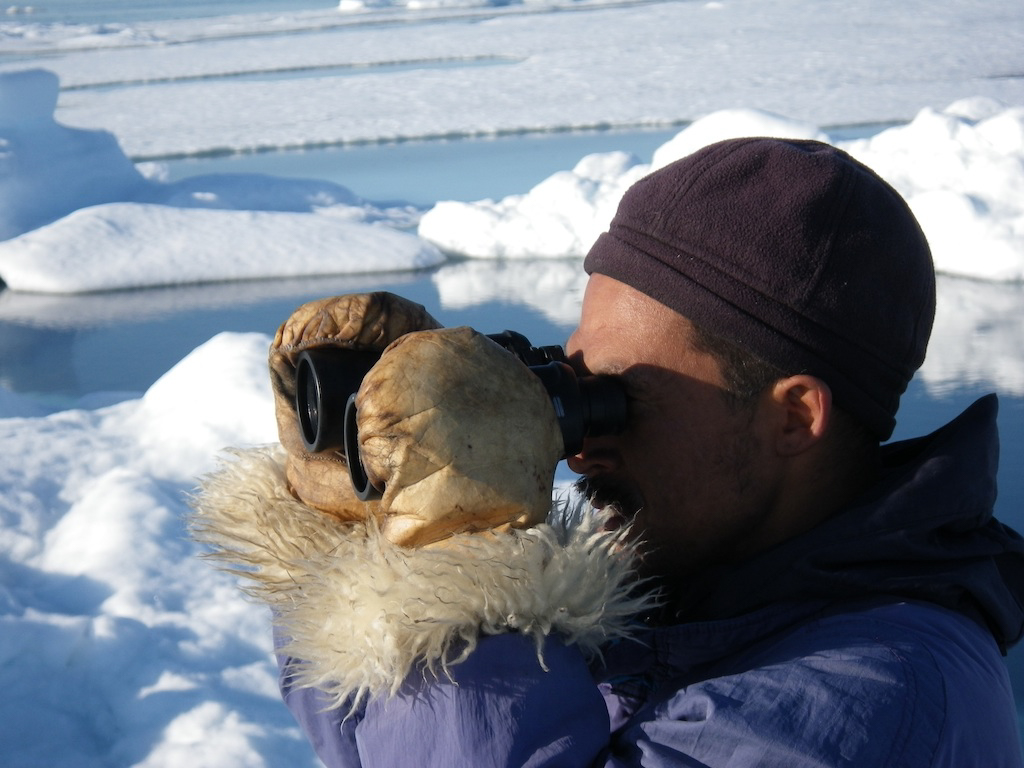How to Protect Northern Marine Ecosystems—and Why
Louie Porta, Executive Director at Oceans North, emphasizes the interconnection of ocean and climate health and stresses the crucial role of Indigenous Peoples as stewards. Oceans North advocates for place-based marine conservation, emphasizing co-created policies and community well-being for effective and lasting change.
Where I live in Nova Scotia, the summer of 2023 was a season of extremes both on the land and in the water. In July, scientists recorded warmer temperatures in the North Atlantic Ocean than ever before; these “marine heatwaves” can be devastating for marine life, with cascading effects on fisheries and other ocean-dependent jobs. A month before that, wildfires spread across the province, causing widespread damage.
For me, and for many of us, the stakes of the climate and biodiversity crises increasingly are being felt close to home. I find it’s a source of worry, but also a source of hope: seeing and understanding the impacts of our changing planet are motivating more and more people to get involved. Meanwhile, countries around the world— including Canada—have pledged to protect 30 percent of their lands and waters by 2030. What is needed at this critical moment is an integrated approach that organizes and unlocks the unprecedented global momentum that exists to address the challenges facing us—as well as the growing recognition of the key role that Indigenous Peoples can and must play in conservation.

The Roadmap to 2030
Working towards 2030, we need to keep two main principles in mind. The first is that the health of the ocean and the health of the climate are intertwined. Reducing emissions is one part of the puzzle—limiting stress on intact, functioning marine ecosystems that sequester carbon and regulate the global climate is another.
The second is that Indigenous Peoples are best placed to steward the lands and waters they have maintained for millennia. They have a long history of resilience and adaptation as well as extensive knowledge of their surroundings and sustainable practices for stewardship and survival. Many of these communities are inextricably intertwined with ocean ecosystems: they are on the front lines of climate change and are the most invested in a healthy future for their regions.
“Indigenous Peoples are best placed to steward the lands and waters they have maintained for millennia“
Louie Porta
For the last 13 years, Oceans North has been working in deep partnership with Indigenous and coastal communities across Inuit Nunangat and Atlantic Canada to address the unprecedented environmental changes taking place in northern marine ecosystems. What we have learned during this time is that place-based marine conservation is so much more than lines on a map and an agreed management plan. Our experiences working in communities and with governments at all levels have taught us that to achieve meaningful, durable change, we must advance marine conservation within the context of supporting Indigenous Peoples to be the leading stewards and caretakers of their homelands and waters.

In Canada, the social appetite for climate action and conservation is strong. Public opinion polling now indicates that, as of 2023, 70-80 percent of Canadians are concerned about climate change and support robust action on the part of the federal government to address its causes. Previous polls have also shown large-scale support for Indigenous-led conservation, with two-thirds of Canadians in favour of investment in Indigenous protected areas and monitoring. In fact, last December, the federal government pledged up to $800 million towards Indigenous-led conservation efforts across Canada—one of the largest investments in the country’s history.
Local Efforts, Global Gains
So, what comes next? While some work has already been done, future efforts to advance conservation need to find common ground with Indigenous communities and develop an approach in which conservation goes hand-in-hand with community wellbeing; policies and governance structures are co-developed and foster Indigenous rights and responsibilities; and area-based measures protect important cultural, social, scientific, and ecological areas that strengthen local management, jobs, and communities.
The co-creation of knowledge and community-based monitoring are the core enabling conditions needed to realize meaningful protections and the associated conservation economy outcomes. For example, in Arqvilliit (Ottawa Islands), we have been working with Nunavik Inuit to gather DNA data on polar bears—a key species for local people. Ensuring a healthy population of polar bears is one of the reasons driving them to create an Indigenous Protected and Conserved Area in the region. Ongoing monitoring also ensures that conservation gains are durable. In Mittimatalik (Pond Inlet), just outside the Tallurutiup Imanga National Marine Conservation Area, we’ve supported a long-running project to monitor underwater noise and understand how shipping from a nearby mine might be affecting the world’s largest summering population of narwhal.

The urgency has never been greater. We cannot have resilient nature, climate, and communities if we are not building a strong foundation for management and stewardship from the bottom up. Foregrounding Indigenous-led, on-the-water management is not only principled but practical. When we begin with the principle that people who live adjacent to these abundant areas must be empowered to manage their own homelands and enforce their own priorities and visions, and we commit to supporting the outcomes that people need and find valuable, we are actually ensuring that the hardest work—implementation, management, and monitoring—can be achieved.
“We cannot have resilient nature, climate, and communities if we are not building a strong foundation for management and stewardship from the bottom up”
Louie Porta
Some of these places, especially those in the Arctic, might seem remote to those of us living in the south. But what the ocean teaches us is that, even across vast distances, we’re all connected—what happens in one place can and will affect us all. And we’re connected in another way, too: through a desire to protect our home. One of the best ways to do that is to empower other people to protect theirs.

















